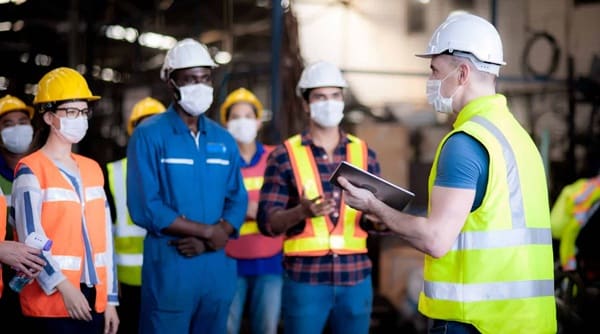Key Takeaways
- Effective safety training significantly lowers the risk of workplace injuries and illnesses.
- Comprehensive, role-specific training builds a culture of safety and compliance.
- Integrating advanced technology, such as virtual reality, boosts engagement and retention in training programs.
- Ongoing evaluation and recognition of safety practices are crucial for a sustainable safety-first culture.
Table of Contents
- Understanding the Importance of Safety Training
- Key Components of Effective Safety Training Programs
- Technological Advancements in Safety Training
- Statistical Evidence Supporting Safety Training
- Building a Safety-First Culture
- Conclusion
Understanding the Importance of Safety Training

Running a small business is filled with both opportunities and challenges. One of the most critical aspects of maintaining a productive and sustainable workplace is ensuring employees are well-versed in safety protocols. Safety training equips workers with the knowledge to identify potential hazards, follow proper procedures, and respond effectively in emergencies. When employees are trained consistently and comprehensively, the likelihood of accidents and injuries decreases significantly, creating a more secure and confident workforce. Beyond compliance, safety training fosters a culture of awareness and accountability that benefits staff and management.
Proper safety training can protect employees and have financial and legal implications for businesses. Workplaces prioritizing training often experience fewer claims, which can directly impact costs associated with workman’s comp. Understanding how to prevent accidents reduces the risk of costly injuries and ensures employees receive the support they need if incidents occur. This dual focus on prevention and preparedness strengthens overall workplace resilience.
Key Components of Effective Safety Training Programs
- Job-Specific Training: It is essential to tailor safety training content to address the specific hazards employees face in their roles. Training sessions should include hands-on demonstrations and relevant case studies to make protocols tangible and practical for each work area. This may involve the use of specialized equipment, operating machinery, or exposure to hazardous substances, each requiring different safety considerations.
- Onboarding and Refresher Courses: Safety begins on day one of employment. New hires should be introduced to emergency procedures, PPE (personal protective equipment), and reporting chains immediately. Regular refresher courses keep all personnel up to date with procedures and regulations, reinforcing best practices over time. This approach ensures that safety knowledge does not deteriorate or become outdated.
- Interactive Learning Techniques: Leveraging interactive methods, such as simulations, role-playing exercises, and team discussions, fosters active engagement and deeper learning. These methods help reinforce the material and give employees the confidence to act swiftly in real situations. Interactive learning also encourages feedback and peer learning, helping to address questions or misconceptions as they arise.
- Emergency Response Drills: Frequent scenario-based drills, including fire, chemical spill, or medical emergency simulations, are vital in assessing readiness. They help pinpoint areas for improvement and ensure everyone knows their role during a crisis. Drills should involve realistic scenarios and be evaluated afterward to refine emergency response strategies.
- Leadership Training: Managers and supervisors should be empowered to model, reinforce, and enforce safety protocols within their teams. Their support is crucial in maintaining compliance and encouraging a safety-oriented mindset. A well-trained leadership team can help resolve disputes around safety, oversee corrective actions, and recognize exemplary behavior, thereby driving overall program effectiveness.
Technological Advancements in Safety Training
Technology is transforming workplace safety by making training more immersive with virtual reality (VR) environments for simulating hazardous scenarios. In high-risk industries, tailored VR tools mimic real conditions—like machinery operation or emergency responses—without danger, providing experiential learning. VR allows repeated practice of stressful scenarios in a safe setting until mastery is achieved. A recent study on a VR tool for refinery workers showed improved safety understanding and higher confidence in responding to unexpected events, suggesting technology could raise safety standards industry-wide. VR also assesses reactions under pressure, offers instant feedback, and personalizes learning. Beyond VR, digital platforms, mobile apps, and e-learning modules support scalable, flexible, and trackable safety training, especially for remote teams, with dashboards enabling real-time progress monitoring.
Statistical Evidence Supporting Safety Training
Strong empirical evidence supports the effectiveness of structured safety training. Data reveals a compelling association between robust safety education and lower rates of injuries and incidents. For example, more than 60% of frontline workers surveyed noted that improved training could have helped prevent injuries experienced or witnessed on the job. Well-trained teams are quicker to notice hazards, report incidents, and make corrections that could avert significant accidents before they escalate. Such findings highlight the tangible impact that comprehensive safety instruction has on workplace well-being and productivity.
Better safety outcomes ultimately lead to financial benefits for organizations by reducing lost workdays, lowering turnover, and cutting potential costs related to accidents. Reported injury rates have steadily declined in sectors with strong, ongoing training requirements, reinforcing the importance of investing in proactive and dynamic safety programs. Furthermore, companies with effective safety programs find it easier to attract and keep skilled workers, which is especially vital in industries facing tight labor markets.
Building a Safety-First Culture
Establishing a culture of safety demands commitment from every organizational level. It starts with regular assessment of training needs, engaging employees in identifying risks, and adapting training to newly emerging hazards. Involving staff directly in this process cultivates personal accountability and reinforces the importance of shared responsibility. A culture of open communication and proactive risk identification empowers everyone to be safety leaders, not just passive recipients of policy.
- Assessing Training Needs: Conduct periodic risk assessments and solicit feedback to address evolving workplace hazards.
- Measuring Training Effectiveness: Evaluate your program through injury statistics, feedback surveys, and on-the-job performance indicators.
- Fostering Continuous Learning: Encourage regular skill refreshers, toolbox talks, or micro-learning initiatives to keep safety top of mind.
- Recognizing and Rewarding Compliance: Publicly celebrate exemplary adherence to safety practices to motivate ongoing compliance and improvement.
Investing in a safety-first culture is not only an ethical choice but also a strategic one, as it preserves your organization’s most valuable asset—its people. Long-term success in safety is rarely the result of one-time initiatives but is achieved through ongoing commitment and incremental improvement embraced by all.
Conclusion
Effective safety training is the cornerstone of workplace injury prevention, employee well-being, and organizational success. By integrating advanced technologies, tailoring content to specific job roles, and nurturing a culture of continuous safety improvement, businesses can reduce injury rates, control costs, and comply with evolving regulations. A strong commitment to safety is both a legal obligation and a strategic business investment that yields dividends in productivity, morale, and reputation. Sustaining this commitment over time requires leadership involvement, robust ongoing education, and the active participation of every employee.

